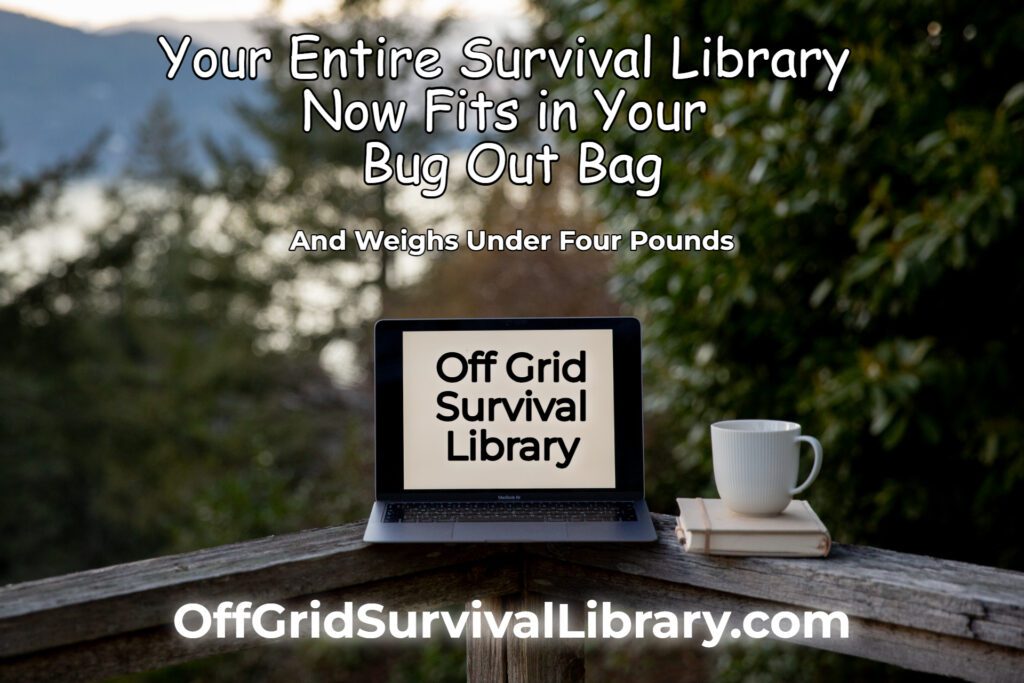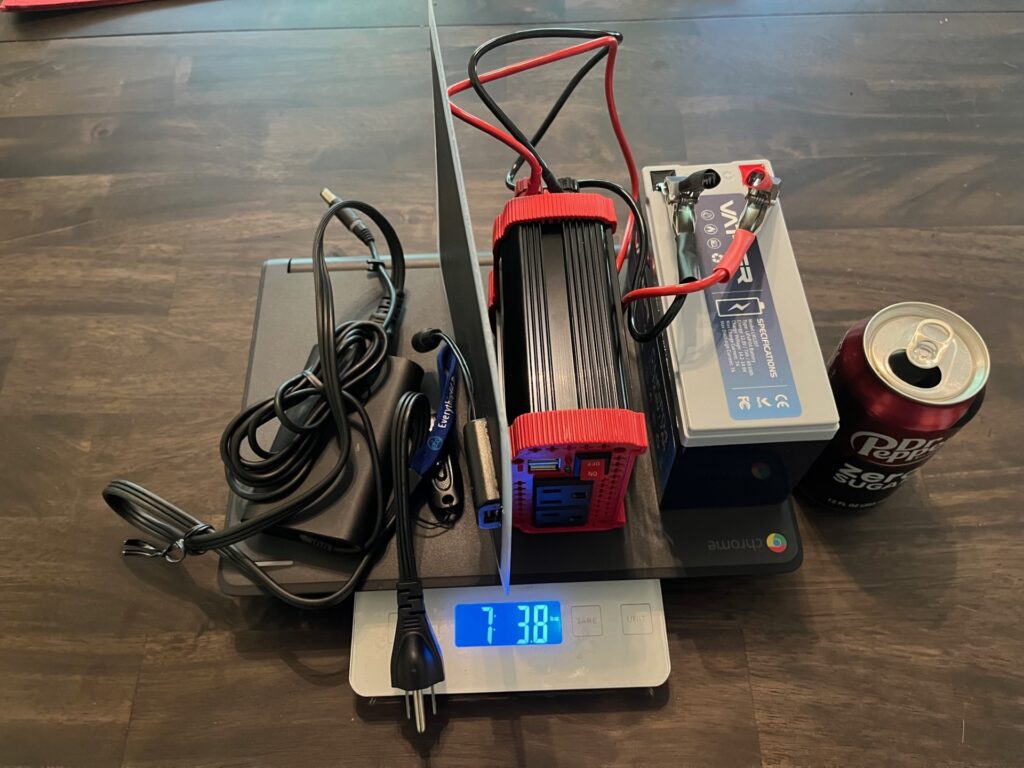Perhaps you have done a great job of preparing for an emergency or SHTF situation. Maybe you bought or built a survival kit collection with Get Home Bags, 72-Hour Bug Out Kits, 21-day Packages, and/or Three Month Bug In Stashes. Or maybe you are TRULY prepared with multiple levels of survival supplies.
But at some point, those resources will run out.
What do you do then? Figure out how to gather and filter water, build a suitable shelter, build a fire for warmth/cooking, forage for food, provide first aid / medical care . . . If you are a Veteran or experienced Survivalist, you might have the knowledge you need, but for the rest of us . . . we will need a library.
A SHTF or long-term totally off-grid situation wouldn’t be so daunting if we had our phones, computers, and access to the internet. The amount of information available online is amazing, but it won’t be available in an off-grid situation. So our only access to this survival information will be the books we have taken along with us on the journey. Just imagine the bulk and weight of such a library.
During a discussion about this topic, we were told that it wasn’t possible to build such a monster for less than $1,000.00. A laptop that had access to everything needed to survive off-grid without connecting to the internet? They said it couldn’t be done. We called BS. We were challenged to actually do it, “if you’re smart enough”. The next thing we knew, we were issued a Triple Dog Dare! SO, just like Flick from “A Christmas Story”, we stepped up and did it!!!! But the result wasn’t us stuck by the tongue to a flag pole . . . it was a product that every self-respecting survivalist and prepper needs in their survival kit.
We have figured out how to put all the knowledge we need to survive off-grid long-term in a package that easily fits in the bottom of a backpack . . . and weighs less than 4 pounds!!!

Here is how we did it:
Step 1: Choose the right computer. We wanted our rig to be cost-effective, lightweight, durable, and have excellent battery life. We also wanted to make sure that it would continue to function long-term without the need for updates. To see what we came up with as the best solution, please click here to check out our chosen platform.
Step 2: Download FREE open-source “How To” information. Our focus was on how to secure drinkable water, safely hunt or forage for food, build short- and long-term shelters, make fire for warmth and cooking, etc. Please click here to see a list of the How To resources that we felt were the most useful.
Step 3: Download FREE open-source “Emergency Medical Care” information. It’s important to know how to treat traumatic injuries that might be encountered during an extended off-grid event. Here is a list of the Emergency Medical Care resources we have on our unit.
Step 4: Download FREE open-source “Herbal Medicine” information. We wanted to ensure that we could identify existing medicinal plant species that could be used to support ongoing health concerns when existing medication supplies are exhausted during an extended off-grid event. See a list of the Herbal Medicine resources that we felt were the most useful.
Step 5: Download FREE open-source maps of the United States. These maps show major highways, waterways, and geological features that would make it possible for us to navigate without GPS during extended off-grid events. Click here to see the maps that we felt were the most useful.
Step 6: Save Important Documents. Our focus here was to scan or take pictures of all our vital documents and save them so that they would be available on disk. Click here to see a list of the documents we saved in our library.
We are glad to announce that we have FINALLY accomplished our goal, and SILENCED the naysayers!!! Not only have we built the ULTIMATE Off Grid Survival Library, but we were also able to come in WELL UNDER BUDGET! The unit weighs in at a little over 3 pounds and 10 ounces—PERFECT to drop in the bottom of your survival kit or pack for a hiking trip.
What’s Next?
While we believe that we have built the ultimate Off Grid Survival Library, there are still a couple of things that need to be done to ensure that we are completely ready. Protection from EMPs in the form of a Faraday box and an off-grid electrical supply are our next goals. We have done these things for our personal libraries, but still have a little work to do before having a product that will do these things in a nice package.
Protect the laptop and storage media. Our focus here was to ensure that the laptop and information are protected in a way that will shield it from an ElectroMagnetic Pulse (EMP) that might come from solar flares or nuclear devices. We have wrapped our rigs in bubble wrap and military-grade EMP-proof fabric to keep them safe. We know that most of you probably have a Faraday Box in place, but we will be working on one that is nice enough to offer to other people.
Ensure the availability of electricity. We know that most Preppers are prepared for short-term electrical outages like we are. Our focus here was to ensure that we have a source of electricity that will power the laptop (and run other electrical items) in the event of a prolonged off-grid situation where available diesel and gasoline for generators have all been used.

Above is a picture of one of our Off Grid Survival Library units with a solar panel trickle charger, 12-volt battery, and DC to AC inverter. The entire package comes in at just under 7 pounds and 4 ounces. (The Zero Sugar Dr. Pepper can is just there for size reference.) While we haven’t tested the solar power system enough to offer it to customers, you can easily order the components needed from Amazon (or anywhere else) and build your own to go with your laptop.
Visit our shop if you want an Off Grid Survival Library for yourself to truly complete your survival kit.